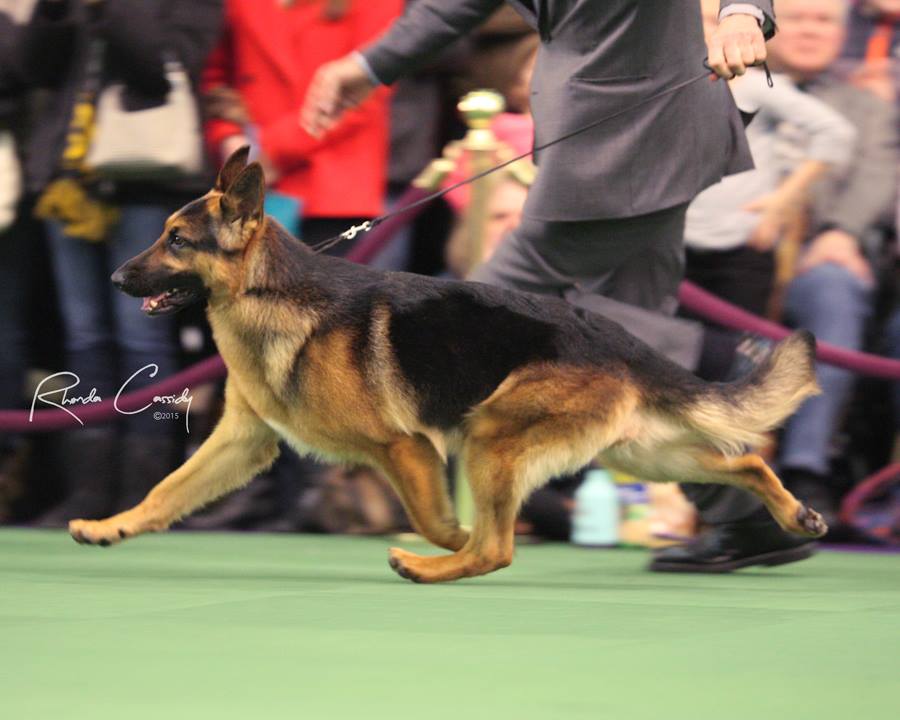This article by Larry Mueller was published in Outdoor Life 15 years ago, in 1998. Since then the science of genetics and epigenetics have advanced tremendously but the conclusion has not changed that much. If you want to breed superdogs, youd better start really, really early in a dogs life. The next installment will present a current perspective on the points raised in Larrys article.
Building The Superdog
Beginning Before Birth
The where, when, why and how of starting a superdog
Larry Mueller
Hunting Dogs Editor, Outdoor Life, 1998
The new century for dogs is now. Modern science has poised the dog world for a fastforward of unprecedented proportions. In the past, superdogs were rare accidents of nature - naturals that made even first timers believe they were great trainers. And now we know how those accidents happen. We hold the simple secrets to building our own superdogs from scratch.
How early can we begin the conditioning which could lead to a superdog? Five months? Eight weeks? Ninety days? Would you believe… in the womb? Its true. We have scientific evidence that the fetus is not sealed in isolation. It lives in its mothers world.
Interestingly, before Mendel discovered genes, breeders were hunting pregnant bitches to produce superior pups. After Mendels theory caught on, that practice was called an old wives tale. Genetics allowed us to break breeding down to numbers and predict a few traits like coat color. So, we assumed that breeding is a crap shoot of many-sided gene dice. All traits, behavioral and physical alike, were thought to be locked m place at birth. It was a neatly packaged theory that shrank nature to fit our head size. To believe it, however, required ignoring all the loopholes and protecting our ignorance against obvious evidence to the contrary.
But this is for the future. For now, were conditioning fetuses to become great hunting dogs: Proof that its possible comes from the University of California , Berkeley
At maturity, Marion Diamond sacrificed some of both groups and physically measured the cortex areas of their brains. The cortexes had actually grown thicker in the challenged rats. For the first time, it was proven that the anatomy of an animal brain could be changed by experience. Subsequent maze tests m other laboratories proved that rats with thicker cortexes were smarter and quicker to learn.
In a second study, Professor Diamond placed pregnant rats in both deprived and challenging environments. Again, the challenged rats had the thicker cortexes. But get this: So did their offspring! Somehow, the mothers experiences had improved their babies ability to learn.
Can this happen in dogs as well as rats? Of course. As Dr. Diamond points out, the number of neurons in a single column of cortical nerve cells is the same in rats, dogs and man. The number of dendrites (branchlike extensions) and the resulting complexity of circuitry is what creates some of the differences between species.
I asked Professor Diamond whether given the olfactory propensity of dogs and the fact that scent is tasted as well as smelled - there might be a biological connection telling the fetuses that their hunting mother is excited and what odor is responsible. Sound reasonable? "It does," she said, cautioning, however, that she believes everything is possible until proven otherwise.
How might the fetus be conditioned by the mother s experience? My own theory is that tasted odor, like medicine held under the tongue, quickly enters the bloodstream. At the same time, excitement releases adrenaline into the bloodstream. Brain chemicals such as seratonin fire into the gaps between the dendrites. A percentage of those chemicals are recycled to be used again by the brain. The remainder enters the bloodstream, which, in a pregnant bitch, also flows through the unborns brain where it reproduces sensations much like the mothers.
Whether my theory is right or wrong (veterinary neurologist and Auburn University
I believe that the time to make the greatest impression on the fetus is the last 21 days of gestation. (Since this was published in Outdoor Life, NBC reported that Dr. David Min used ultrasound to track heartbeats and movements of human fetuses. They began responding to parents voices and music at 26 weeks, verifying the third trimester as the time of greatest opportunity for influencing the unborn.)
Additional support for hunting the pregnant bitch comes from Missouri
But will breeders hunt their pregnant bitches? Should we risk hunting ours? Weve always pampered them. I can only answer with more questions. Have you ever known a coyote who took off two months from hunting to have her pups? Have you ever known a young coyote that wouldnt hunt? Not hunting the pregnant bitch may well be the first step in producing all those worthless dogs we see.


















.jpg)






